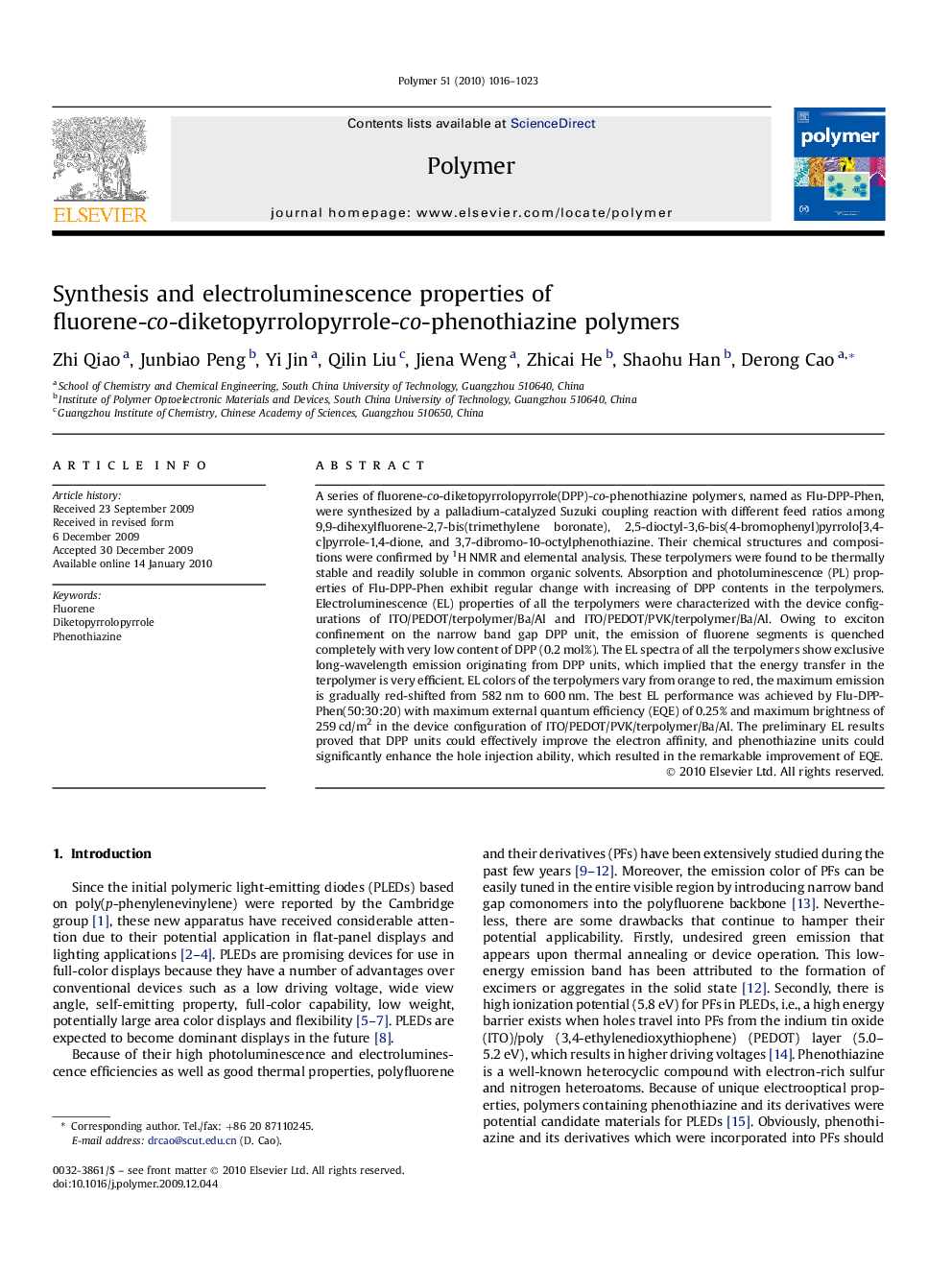| Article ID | Journal | Published Year | Pages | File Type |
|---|---|---|---|---|
| 5185188 | Polymer | 2010 | 8 Pages |
A series of fluorene-co-diketopyrrolopyrrole(DPP)-co-phenothiazine polymers, named as Flu-DPP-Phen, were synthesized by a palladium-catalyzed Suzuki coupling reaction with different feed ratios among 9,9-dihexylfluorene-2,7-bis(trimethylene boronate), 2,5-dioctyl-3,6-bis(4-bromophenyl)pyrrolo[3,4-c]pyrrole-1,4-dione, and 3,7-dibromo-10-octylphenothiazine. Their chemical structures and compositions were confirmed by 1H NMR and elemental analysis. These terpolymers were found to be thermally stable and readily soluble in common organic solvents. Absorption and photoluminescence (PL) properties of Flu-DPP-Phen exhibit regular change with increasing of DPP contents in the terpolymers. Electroluminescence (EL) properties of all the terpolymers were characterized with the device configurations of ITO/PEDOT/terpolymer/Ba/Al and ITO/PEDOT/PVK/terpolymer/Ba/Al. Owing to exciton confinement on the narrow band gap DPP unit, the emission of fluorene segments is quenched completely with very low content of DPP (0.2Â mol%). The EL spectra of all the terpolymers show exclusive long-wavelength emission originating from DPP units, which implied that the energy transfer in the terpolymer is very efficient. EL colors of the terpolymers vary from orange to red, the maximum emission is gradually red-shifted from 582Â nm to 600Â nm. The best EL performance was achieved by Flu-DPP-Phen(50:30:20) with maximum external quantum efficiency (EQE) of 0.25% and maximum brightness of 259Â cd/m2 in the device configuration of ITO/PEDOT/PVK/terpolymer/Ba/Al. The preliminary EL results proved that DPP units could effectively improve the electron affinity, and phenothiazine units could significantly enhance the hole injection ability, which resulted in the remarkable improvement of EQE.
Graphical abstractDownload full-size image
